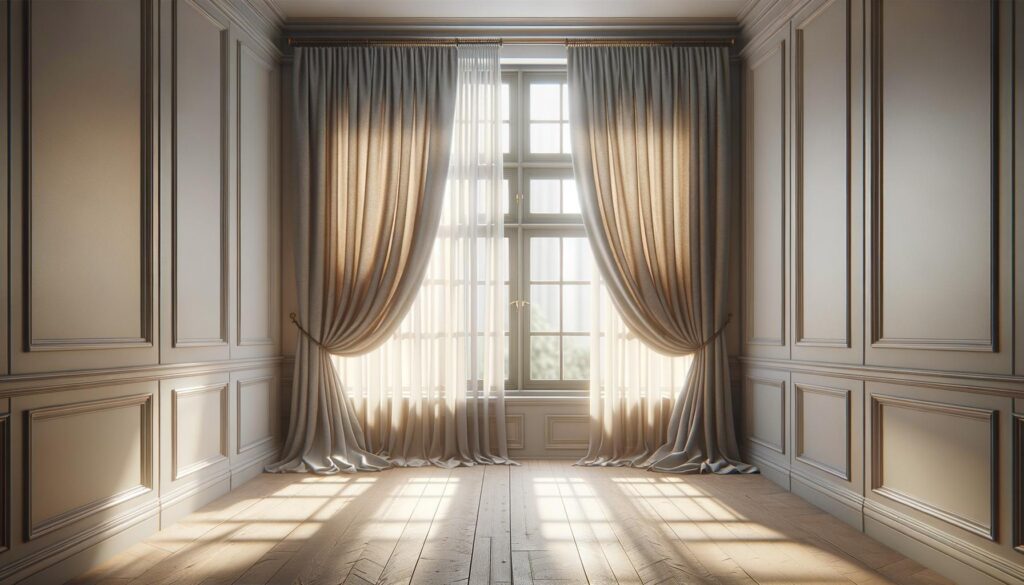Enhancing Your Home with Drapes and Curtains

The Difference Between Drapes and Curtains
When embarking on a home decor journey, understanding the difference between drapes and curtains is essential. Drapes, often made from heavier fabrics, are typically lined with material that adds an element of sophistication and luxury to any room. They are perfect for formal spaces like the living room or dining room, where elegance is key. On the other hand, curtains are usually lighter and made from a variety of fabrics like cotton or polyester, making them versatile for casual settings. They can be placed in bedrooms, kitchens, and bathrooms, where a more relaxed ambiance is desired. By identifying the specific needs of each room, whether it’s for privacy, light control, or aesthetics, homeowners can make informed decisions about which window treatment is most suitable.
Choosing the Right Material
Material selection is one of the most crucial aspects when choosing drapes and curtains. The fabric not only dictates the style but also determines functionality. For instance, thick materials like velvet or wool are excellent for insulation, helping to maintain room temperature and offering privacy. Meanwhile, lighter fabrics such as linen or sheer polyester allow natural light to filter through, creating a bright, airy atmosphere. When selecting materials, consider factors including:
- Light control needs: Choose blackout fabrics for complete darkness or sheer materials for diffused light.
- Room purpose: Formal rooms may benefit from silk or brocade, while casual areas might suit cotton or linen.
- Maintenance: Some textiles require special care, like dry cleaning, while others are machine washable.
With these considerations in mind, selecting the ideal fabric becomes a more straightforward process.
Color and Pattern: Setting the Mood
Color and pattern choices significantly impact the mood of a room, making them key elements in drape and curtain selection. Neutral tones such as beige, gray, or soft pastels can bring a sense of calm and relaxation, perfect for spaces designed for rest. Conversely, vibrant hues like red, blue, or green can energize a space, ideal for playrooms or creative studios. Patterned drapes and curtains add visual interest and can either complement or contrast existing decor. Patterns to consider include florals for a classic look, geometric designs for a modern style, or striped patterns for added depth. Balancing color and pattern with existing furniture and wall colors will enhance the harmony of the entire room.
Functionality and Hardware
Beyond aesthetics, functionality is a crucial component of drapes and curtains design. The appropriate hardware and accessories ensure that your window treatments are not only beautiful but also practical. Rods, rings, and hooks play a pivotal role in how curtains hang and move. Selecting sturdy, well-designed rods that align with the curtain style enhances durability and ease of use. Consider the following when choosing hardware:
- Size and length: Match the rod size to the window dimensions to complement the room’s scale.
- Finish: Coordinate the finish of the hardware with other fixtures in the room such as door handles and light fixtures.
- Mechanics: Opt for pull cords or motorized options for heavy drapes or hard-to-reach windows.
To maximize functionality, ensure that the hardware blends seamlessly with your drapes and curtains’ overall design.
DIY or Professional Installation?
Once the decision about materials, colors, patterns, and hardware has been made, the next step is installation. The choice between a DIY approach versus hiring a professional often depends on the complexity of the project. Simple curtain sets can often be installed with just a few tools and some patience. However, intricate setups involving valances, elaborate tiebacks, or multi-layer drapes might require the precision that professionals can offer. When opting for professional installation, ensure that the service includes proper measurement and consultation to avoid common pitfalls such as improper alignment or inefficient usage of space. On the other hand, DIY enthusiasts can take advantage of numerous online tutorials that provide detailed steps and creative ideas.
Conclusion: Transforming Spaces with Drapes and Curtains
Selecting the right drapes and curtains is an investment in your home’s aesthetic and functionality. By understanding the differences between styles and materials, considering the color and pattern, and deciding on the appropriate hardware, homeowners can create an environment that reflects their personal style and meets their practical needs. Whether choosing to install themselves or enlisting professional help, individuals can enjoy the transformative power these window treatments bring to their living spaces.
